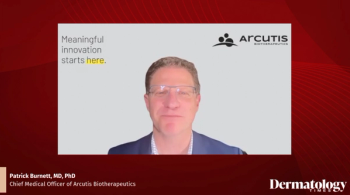
Severe pediatric skin disease
San Francisco - Children with skin diseases such as severe psoriasis, eczema and hemangiomas are benefiting from new treatments and new knowledge about existing treatments, experts say.
San Francisco
- Children with skin diseases such as severe psoriasis, eczema and hemangiomas are benefiting from new treatments and new knowledge about existing treatments, experts say.
When treating children with severe psoriasis, dermatologists must first remember that "almost everything is off-label in young children. So, I encourage everybody to maximize topical therapy - even if it’s off-label - before moving to systemic therapy," says Douglas Kress, M.D., chief of pediatric dermatology at Children’s Hospital of Pittsburgh.
In considering systemic agents, he says, "We should offer children all the systemic therapies would offer to their parents, whether it’s methotrexate, cyclosporine or any of the biologic therapies."
Although these medicines possess known side effects, Dr. Kress says that many dermatologists’ experience shows that these drugs actually are safer and more effective in children than in adults. In the most recent study here, Enbrel (etanercept, Amgen/Wyeth), proved about 10 percentage points more effective in children at every dose level than it has in any adult trial (Paller AS et al.N Engl J Med. 2008 Jan 17;358(3):241-251).
In treating severe pediatric eczema or atopic dermatitis (AD), says Elaine Siegfried, M.D., professor of pediatrics and dermatology at St. Louis University’s Cardinal Glennon Children’s Hospital, "Match the aggressiveness of your treatment with the aggressiveness of the disease."
Options include cyclosporine, which she says has the most scientific support behind it - particularly for "putting out the fire" of a short-term flare.
With immunomodulators such as Raptiva (efalizumab, Genentech), she says, "I maintain a very high index of suspicion for opportunistic and occult infections." Such infections not only increase patients’ risks in their own right, but they also can serve as occult triggers for AD.
In treating infantile hemangiomas, "One size doesn’t fit all," says Ilona Frieden, M.D., professor of clinical dermatology and pediatrics, University of California, San Francisco (UCSF).
However, deciding which hemangiomas to treat, and how, can be somewhat difficult because infantile hemangiomas comprise a veritable "31 flavors" of diversity, she says.
In one study involving more than 1,000 patients, 24 percent of patients experienced complications; physicians used some form of treatment in 38 percent of cases; and 13 percent of cases required systemic therapy (Haggstrom AN et al. Pediatrics. 2006;118:882-887).
The hemangiomas that required treatment or experienced complications were more likely to be located on the face than elsewhere, Dr. Frieden says.
Furthermore, she says that even when researchers controlled hemangiomas for size, "Segmental hemangiomas were 11 times more likely to have complications, and eight times more likely to receive treatment, than localized hemangiomas were."
Regarding treatments, systemic corticosteroids remain the mainstay for dangerous hemangiomas, Dr. Frieden says.
However, she says propranolol represents an exciting new option that’s been most recently featured in a small case series (Bonifazi E et al.Eur J Pediatr Dermatol. 2008;18:185-192).
Intralesional corticosteroids, which she recommends using in very small amounts and not in hemangiomas impacting the periocular area, represent another option, Dr. Frieden says.
Researchers at UCSF and elsewhere also are testing vincristine versus steroids, she says, while interferon alpha therapy should be used in children under 1 year of age due to the potential for neuromuscular complications (Michaud A et al. Laryngoscope. 2004;114:1231-1236). DT
Newsletter
Like what you’re reading? Subscribe to Dermatology Times for weekly updates on therapies, innovations, and real-world practice tips.

















